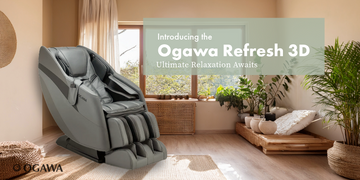Whether you’ve taken a yoga or pilates class, worked out at a gym, or looked through relaxation tools like massage chairs, no doubt you’ve run into the term “neutral spine position.” What is a neutral spine position and how are you supposed to find it during all these activities?
The neutral position of the spine is less difficult to understand (and find) than you may think. Today, we’re taking a look at what the neutral spine position is, how to find it, and the benefits you may experience from it, as well.
The Neutral Spine Position
First off, what is neutral spine position? It’s difficult to find something when you’re not sure what you’re trying to achieve! Contrary to what you might think, a neutral spine isn’t necessarily a straight spine. Instead, neutral spine position refers to the natural way our spine curves to maintain body balance while experiencing the least amount of musculoskeletal stress. In layman’s terms, that means the neutral position of the spine is the optimal position of your back to align the natural curvature of the spine while evenly distributing pressure.
Even though we are often told to “stand up straight,” inside our bodies there are actually three natural curves to the spine. These are the cervical (neck), thoracic (middle), and lumbar (lower). Neutral spine position is achieved when all three of these are in optimal alignment to avoid excess pressure on any one part.
When Is Neutral Spine Position Important?
It’s always important to focus on keeping a neutral spine during specific exercises, including running, biking, and lifting weights, in order to decrease the risk of injury. You’ll also find the neutral position of the spine is crucial whenever an activity requires good posture and balance to be completed correctly. This can be seen in activities like yoga or Pilates, which require neutral spine position to be found in order to accurately and safely exercise.
Perhaps most interesting to note, however, is that the neutral spine position is possibly most important when you’re not doing any work at all. For example, when standing, sitting, or performing other routine activities like driving, finding the neutral position of the spine may help you avoid neck pain, back pain, or other ailments resulting from a misaligned spine.
How to Find Neutral Spine Position
Now that you’ve got a better understanding of what the neutral position of the spine is, it’s time to learn how to find neutral spine position. Everyone’s neutral spine position will be a little bit different due to differences of muscles and bones in the body. That said, the process for finding the position is the same regardless.
The easiest method for how to find neutral spine position is to lie flat on your back and exhale slowly. After relaxing your back, shoulders, and pelvis, the resulting position after your exhale should have your lower back slightly elevated off the floor. You can follow these step-by-step instructions:
- Lie on your back with your knees bent and your feet flat on the floor. Keep your legs parallel and your heels, toes, knees, and hips all in a line.
- Rest your arms at your side.
- Melt onto the floor, relaxing your body (including your shoulders, neck, and jaw) and allowing your back to rest on the floor without any effort.
- Take in a deep breath through your nose, letting the air fill your lungs fully.
- Exhale slowly through your mouth, using your abs to press your lower back into the floor and tucking in your pelvis.
- Inhale through your nose again while pulling your lower back upwards once more. The gap between your lower spine and floor should appear again.
This exercise for how to find neutral spine position is meant to focus on releasing tension without exerting effort or pressure on the body. It’s the hallmark of finding neutral spine position for many activities like yoga and Pilates.
The Relationship Between Neutral Spine Position and Zero Gravity Position
If you can learn how to find neutral spine position with a floor exercise, what is the zero gravity position you’ve heard about, you wonder? The zero gravity position is a reclining design based on observations made by NASA on the neutral position of astronauts at rest in space. This technology has been adapted over the years and you may now find it as a feature of a luxury massage chair.
In the zero gravity position, the legs are elevated above the heart level while weight and pressure is distributed evenly along the body. Using a full body massage chair with zero gravity reclining allows you to achieve neutral spine position, opening yourself up to a host of potential health benefits such as:
- Improved blood circulation
- Back pain relief
- Mental health boosts from stress management
- Faster bodily healing
- Lowered risk of heart disease
Other massage chair features from the benefits of heat therapy to different types of massage programs and even chromotherapy may compound with the neutral position of the spine in zero gravity to enhance the positive effects.
Now that you’ve got a better understanding of the neutral spine position and how it benefits your body in a plethora of ways, consider how you can be mindful of it in your everyday life. Whether you’re working from the office, playing sports, exercising, or even relaxing after choosing a massage chair with zero gravity reclining, it could make a monumental difference. A healthy spine is crucial to our overall health and wellness, so take the time to care for it!
Want to learn more about the benefits of owning a massage chair? Check out these additional resources about the benefits of massage therapy at home:





